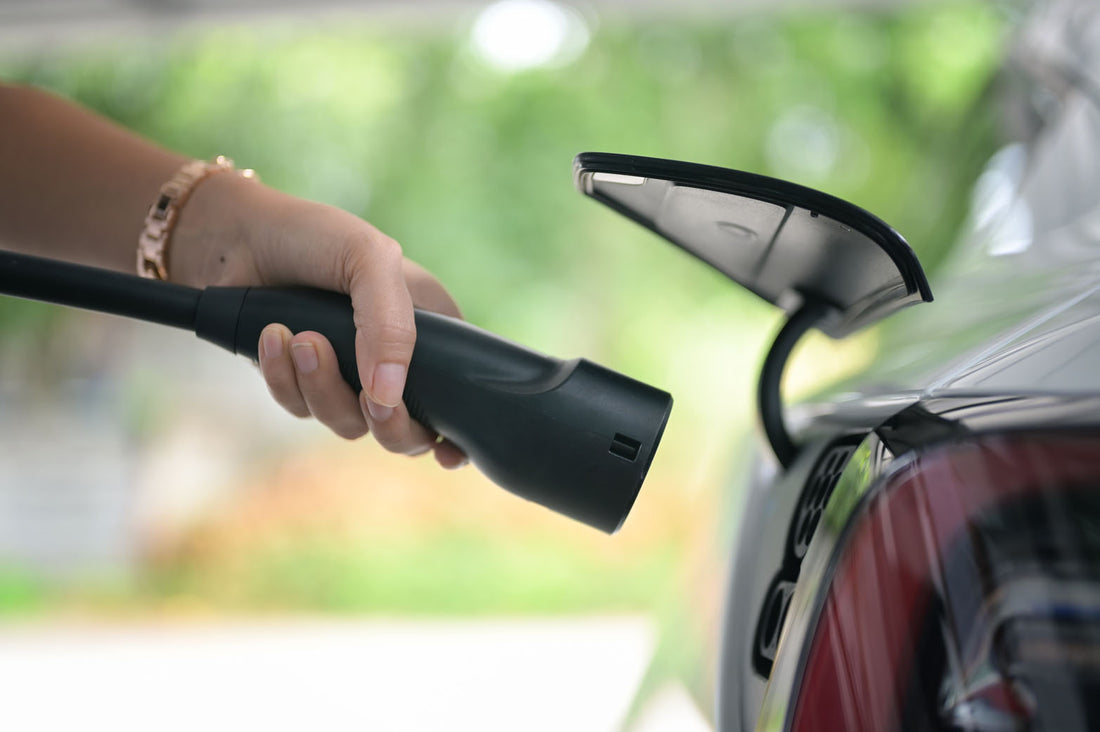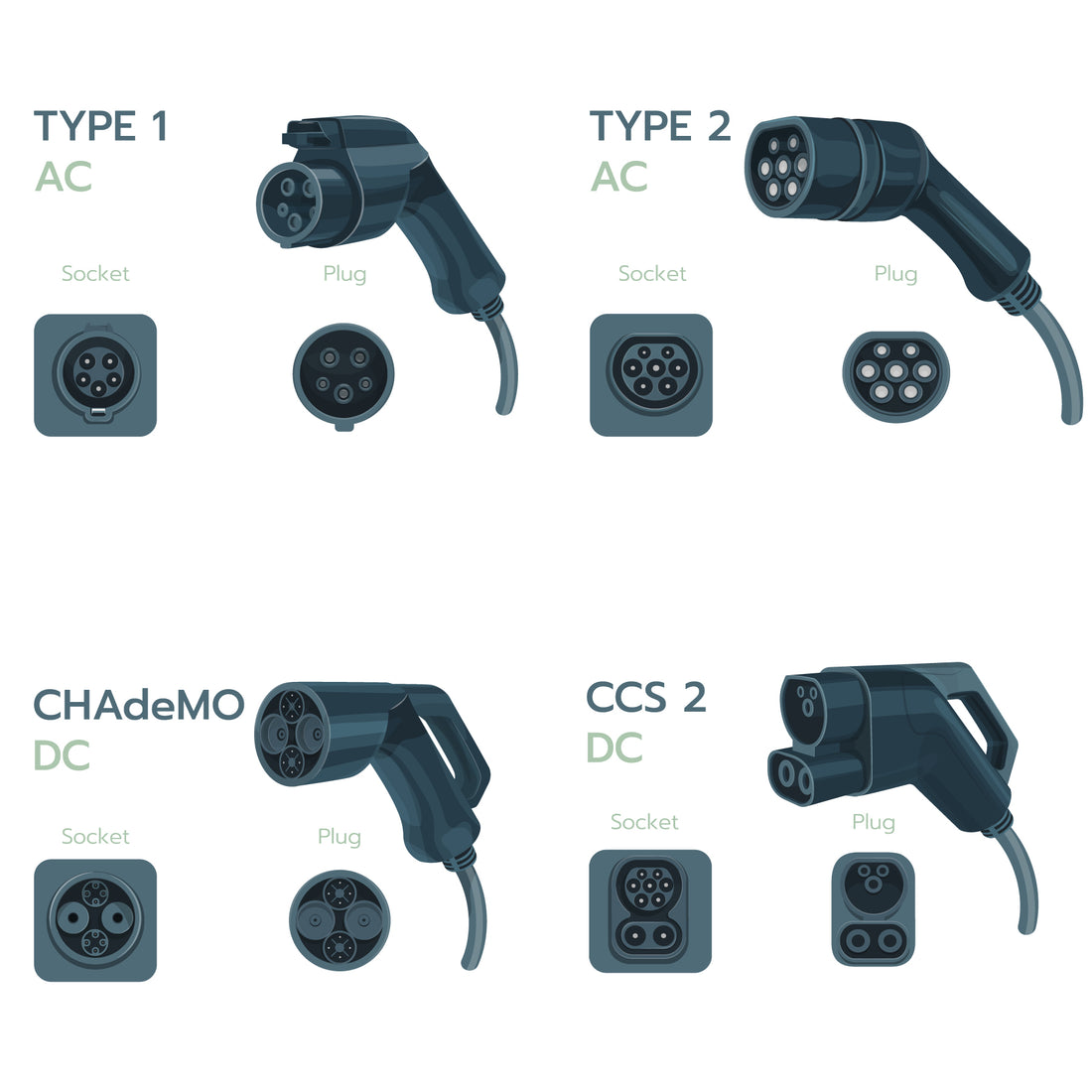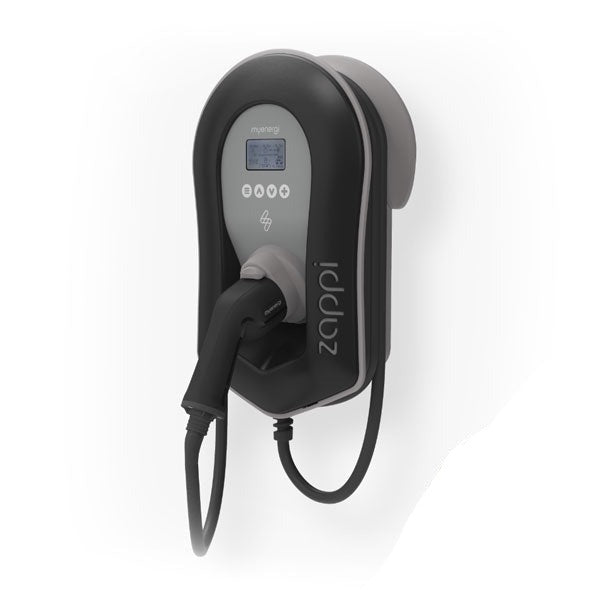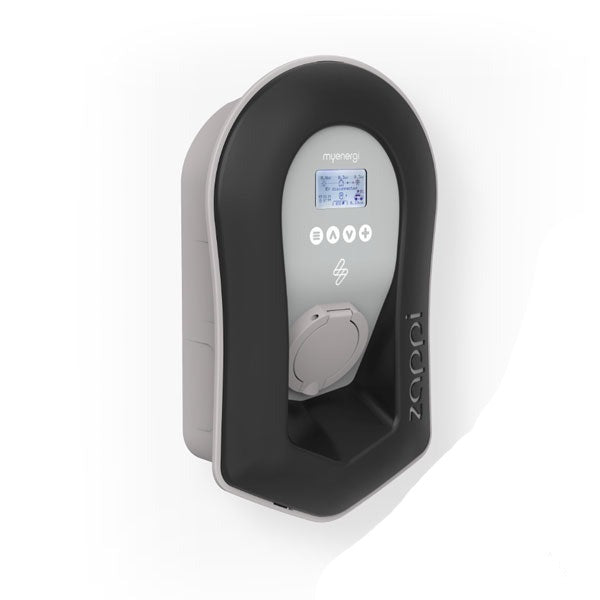Expert Help & Advice
Your guide to electric vehicle (EV) chargers
Electric vehicles are becoming more popular as we move toward a greener future. With the UK government set to ban the sale of new petrol and diesel cars by 2035, now is a great time to consider EV chargers. If you already have solar panels installed at home, an electric vehicle charger lets you power your vehicle with clean energy, cutting costs on electricity and fuel bills. Whether you have an EV now or are looking to futureproof, this guide offers advice and guidance when it comes to choosing a charger for your EV.

-
What is an electric vehicle (EV) charger?
An electric vehicle charger connects your electric vehicle to an electricity source to recharge its battery. It’s an essential part of owning an EV or plug-in hybrid, ensuring your vehicle is always ready to go.
What electric car charger do I need for my car?
When picking a charger for your EV, you’ll need to consider your vehicle’s specifications, your driving habits and how quickly you need to charge. This will help you decide on the charging speed, power output and connector type that suits you best.
What is charging speed?
One of the first things to consider when looking for a charger is the charging speed. Charging speed is measured in kilowatts (kW). The higher the kW rating, the faster your vehicle charges. Home chargers typically offer speeds from 3.7kW to 22kW, depending on your property’s electrical system.
Are there different types of electric vehicle chargers?
There are two main types of chargers: residential and commercial.
Residential chargers are designed for home use. They usually have a power output of 3.7kW to 7.4kW for single-phase systems and up to 22kW for three-phase systems. They are cost-effective, easy to install, and can include smart features like app control and energy monitoring.
Commercial chargers can be found in workplaces, car parks and public spaces. These chargers provide higher power outputs, such as 22kW AC or rapid DC chargers offering up to 350kW. They are built for frequent use, can charge multiple vehicles and often integrate with payment systems.
AC vs DC charging
This refers to the two different types of electric current. AC stands for ‘alternating current,’ while DC is short for ‘direct current.’ Both AC and DC charging stations can be used to charge an EV, but there are differences between them.
AC chargers operate with alternative current and are typically for home use. Charge points with AC charging capabilities will receive the alternating current and pass this on to the vehicle to convert to direct current. Once the car has converted this power, the direct current is then fed into the EVs battery.
DC chargers are typically used for commercial use. They can be found in public spaces, workplaces or service stations and provide rapid charging. DC charge points already have the converter within the charger itself. This means that the power is converted to DC before it is delivered to the EV, resulting in a faster charge time. DC chargers and connectors cannot be used in residential buildings where only AC power is available.

-
What are charging connectors?
The connector is the plug or port that connects the cable to the charger and your vehicle. The connector needs to fit the charging point at one end and your electric vehicle’s charging inlet at the other. Which charging points you can use will depend on which charging connector your car is compatible with.
Types of charging connectors
There are two types of vehicle side connectors used: AC (alternating current) and DC (direct current). The type of connector you need will depend on whether your charger is AC or DC.
EV connectors working with AC are Type 1 and Type 2.
EV connectors working with DC are combined charging system (CCS) and CHAdeMO.
Tethered vs untethered chargers
Tethered chargers come with a fixed cable attached to the charging unit. Tethered chargers are perfect if you have a driveway or dedicated parking space for your EV.
Untethered chargers require you to use your own charging cable. Almost every new EV comes with the cables you will need for charging, usually stored in the boot or under the bonnet. Untethered chargers provide flexibility if you own multiple EVs or if you change your electric vehicle, as you can simply buy a new compatible cable without needing to replace the entire charging unit.
-

Tethered
-

Untethered
Single-phase and three-phase electric car chargers
Single-phase chargers operate on a single-phase electrical supply. This is the standard type of power available in most residential homes. They use alternating current (AC) to deliver electricity to the vehicle, which is then converted to direct current (DC) by the vehicle’s onboard charger to charge the battery. Although the charging time is slower than a three-phase charger, these are perfect for domestic use and overnight charging at home.
Three-phase chargers operate on a three-phase electrical supply. This type of power system is common in public, workplace, commercial and industrial settings. Three-phase chargers provide higher power output and faster charging speeds compared to single-phase chargers but tend to be more expensive and come with higher installation costs.
How much are electric vehicle chargers?
The cost of chargers depends on whether it is for home use or commercial use, the model, type, kW output, charging speed, features and durability.
Where can I install an EV charger at home?
Your charging unit needs to be easily accessible. Depending on the charger you choose, they can be installed indoors or outdoors and can be wall-mounted, post-mounted or even free-standing. It’s best to use a qualified installer to install your electric car charger.
Can I use solar panels for car charging?
Yes, if you have solar panels installed, you can use 100% green energy to charge your EV or hybrid car. You’ll need to install a compatible home charging unit and a PV inverter unit.
If you’re looking to get panels installed, you will need an electric vehicle (EV) compatible solar charger and a solar battery incorporated into your system if you want to charge your car overnight.
Key Takeaway:
The electric car charger you use must be compatible with solar panels, otherwise, you will depend on the electricity from the grid to use your home charging point, which might be more expensive. If you need help selecting the best charger for your panels, get in touch.
How many solar panels do you need to charge your EV?
A standard domestic solar array with between 8-12 panels will do the job. The amount of charging you’ll be able to get from your solar panels depends on how often you use your car, the model you have, how much sun the panels have received and the way you drive.
How long does it take to charge an electric car?
How long your car takes to charge depends on the size of the battery and the type of charger, which is defined by the power in kilowatts (kW). This can vary from several hours with a home charger to a matter of minutes with ultra-rapid (tethered) public chargers.
Can you charge your EV from the grid?
Some chargers are compatible with energy service providers if you want to charge from the grid.
How much does it cost to charge your electric car at home?
Charging your electric car at home is generally cheaper and far more convenient than using public charging points. If you have a charge point at home, it’s a good idea to switch to an EV- specific energy tariff which allows you to access cheaper, off-peak electricity. This means you could be paying less than 10p per kWh (off-peak) to charge – a cost per mile of around 3p. If you have solar panels on your home, you can use 100% green energy to charge your EV – effectively charging for free!








